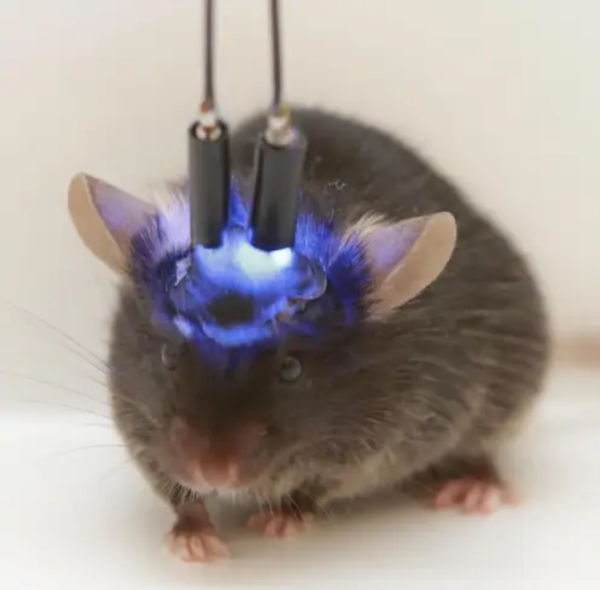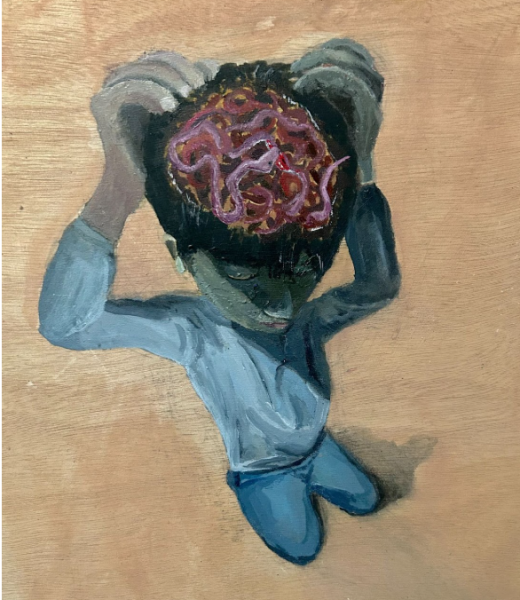When it comes to the most complicated objects in life, few can beat the human brain. Housed in a thick cranium shell, the 3-pound spongy organ controls all of our decisions, our feelings, and our collective human history. However, scientists seemed to meet a metaphorical dead end with brain research for most of the modern era. While President Harry Truman ordered the bombing of Hiroshima, a feat that required scientists to literally split an atom into two, we as a society still struggled to cure (or even understand) depression.
During the “Decade of the Brain” in the 1990s, scientists finally put an emphasis on the human brain. Major institutions and research centers were created as a result of the rise in popularity for brain research. But when tasked to understand such an elaborate system, where does one even begin?
It All Started With Algae
In 2004, a graduate student named Ed Boyden became fascinated by the human brain. Working with Karl Deisseroth at Stanford University, the two started investigating a protein found in green algae called channelrhopsin-2. What was interesting about this protein was its sensitivity to light. Acting like a gate on the cell membrane, it would open whenever it was exposed to blue light, allowing positive ions like Na+ to flow into the cell. This caused the cells to “activate” and the algae would move away from the light source. But what would happen if these light-sensitive proteins were inserted into human neurons?
In 2005, Boyden and his collaborators created viruses containing the genes for channelrhodopsin-2, and placed them in a petri dish containing an isolated human neuron. When the viruses began injecting the genetic material into the cells, they should theoretically have started expressing the protein. One night, Boyden shined blue light on the genetically engineered neuron, and hoped for the best.
“It worked on the first try,” said Boyden, who now works as Y. Eva Tan Professor in Neurotechnology at MIT, among other impressive roles. Indeed, the isolated brain cell began expressing electrical activity, an encouraging sign as this was the way neurons communicated with each other. As Boyden and Deisseroth honed this technique for years, it would gain a name in the scientific community: optogenetics.
Turning on the Light Switch
The idea of turning light into electrical activity in the brain stunned many, especially because it meant we could target specific neuronal pathways. Think of the brain as a network of circuits. If we were able to insert the light-sensitive protein into the neurons of one circuit, then we could understand the function of that specific circuit once we turn the light on. But while the genetic engineering portion of this would be relatively simple, supplying light inside the brain would be a bit more of a challenge.
In 2007, Deisseroth and his colleagues found a way to attach an optical fiber to a mouse’s brain. With parts of the mouse’s motor cortex (an area of the brain responsible for movement) engineered to express channelrhodopsin-2, the scientists turned on the blue light, and voilà: the mouse began spinning erratically. This was the beginning of in-vivo optogenetics, marking one step closer to human applications.

Ever since, the tools of optogenetics have been steadily advancing. In fact, optogenetic therapies today have cured blindness in patients. By manipulating specific neuronal circuits, the hope is to eventually utilize optogenetics to treat diseases from mental illnesses to neurodegenerative disorders like Alzheimer’s.
Currently, advancement of the field relies on producing better technology. “From an engineering perspective, it’s not all that complicated,” says Deisseroth Lab postdoctoral researcher Dr. Alex White, “it’s just that we’re asking some questions on how to build something that no one’s tried building before”. White’s work deals with an important angle of optogenetics, which include developing the optical equipment that allows for the brain to be exposed to light. These devices would hopefully then become widely approved and used in modern medicine.
But there are some stiff legal limitations that continue to pervade the practicality of optogenetics. “It’s hard to get a medical device approved, but it’s possible. It’s hard to get a drug that alters your genetics approved, but it’s also possible. However, it’s never been done where you have to do both at the same time,” White explains.
Where Complexity Bias Rears its Ugly Head
There’s no doubt that optogenetics have contributed to some of the greatest advancements in modern scientific history. In fact, Dr. Daniel Polley, a Professor of Otolaryngology (the study of the ears, nose, and throat) at Harvard University, says it’s the “one technology of this century that has been the most important” to him. But while Polley does use optogenetics in his lab to advance the research of auditory conditions—specifically tinnitus—his vision of the future of optogenetics diverges from most in the field.
Instead of aiming for high-tech solutions like optogenetics that often involve altering the human body in invasive ways, Polley offers a different viewpoint. “There’s a sort of bias that a discovery isn’t real unless it’s complex. I subscribe to the opposite point of view—when something simple works, it’s especially interesting,” he explains.
Still, many in the field embrace complexity as a tool in advancing science, as methods in optogenetics give a level of precision to control neuronal activities that’s currently unobtainable with simpler methods. Scientists in this camp view complex methods as the best way to tackle the complex nature of the brain—a philosophy that naturally gives rise to ambitious goals. “My academic mission is to see everything and control everything in the brain,” reminds Ed Boyden, “I want to understand existence and repair it.”
While the future of optogenetics is divided, what is 100% certain is that it has opened a new chapter in neuroscience, one that introduced light as a medium to help us understand the labyrinths of the brain.


